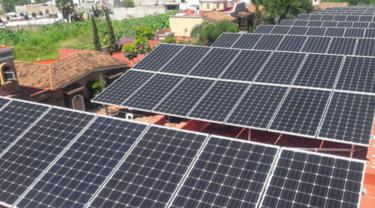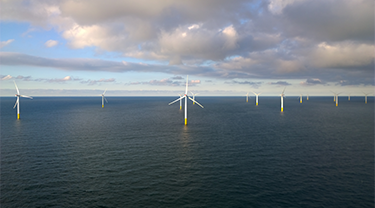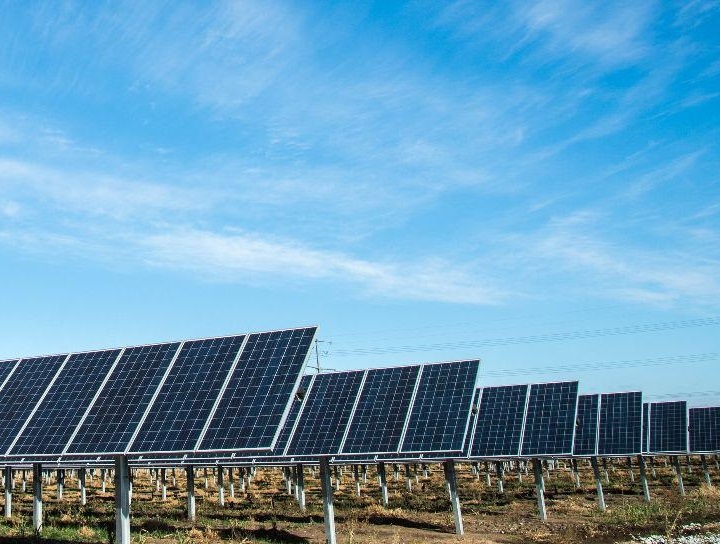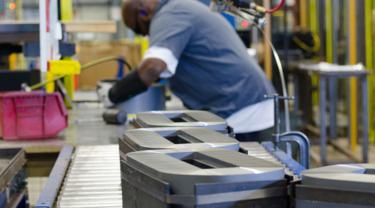When Mississauga-based Silfab Solar started operations in 2011 its business compass was fixed on Canada and two directions, east and west. Several years later, the solar photo voltaic (PV) products manufacturer has redirected its focus: due south.
“In 2014, almost 100 per cent of our sales were domestic,” explains Geoff Atkins, Silfab’s Executive Advisor. “That changed in 2016 to two per cent domestic and 98 per cent export.”
The shift represented a radical and swift change for the company, which resulted from a decision primarily by Silfab’s executives to seize the massive potential of PV products in the U.S. market and offset the declining Canadian solar market.
Today, the U.S. now accounts for 90 per cent of Silfab’s total exports, with the bulk of the remainder destined to Mexico. However, Silfab has exported to eight countries in total. It is part of a family of vertically integrated PV product companies that spans the entire supply chain – from high purity polysilicon to complete solar farms.
“We made a calculated decision to serve the U.S. market that began with developing a plan and creating a brand,” Atkins adds. “We had to re-engineer the entire organization to focus on that market.”
Retooling Silfab included hiring Americans to help the company sell a product that was conducive to that market – a higher efficiency product line. It also meant creating more American customer appeal by changing its website and spec sheets, and gaining feedback from potential customers as to what they wanted.
It was a complete change of mindset, Atkins admits.
“We re-organized the entire workforce in addition to our mission and philosophy to focus on success in the U.S.,” he says. “Everyone now understands that integration into the market we are selling into is critical. We think, talk and walk like a local company.”
The strategy worked. In the past 16 months, the company, which employs 170, has doubled its business. Today, it’s four times larger than it was in 2013, before the company set its sights on the U.S. market.
However, undertaking this bold shift didn’t come without some turbulence along the way.
“It was a huge commitment and we needed laser focus, but there were incredible shifts and bumps in the road,” Atkins says. “But because we were committed, we never lost motivation nor our desire to be successful.”
One of the biggest lessons learned in this process is that going global begins at home and successful exporting relies on both company commitment and vision.
“Good companies with strong products can succeed in any market on the world stage,” says Atkins. “However, there must be buy-in – from the executive suite to the front line of the manufacturing floor – in the company’s commitment to that particular export market. You need to have the investment at the top to put the resources in place and a commitment to value, so (the export market) is the main priority.”
Atkins says leveraging commonalities between the U.S. and Canadian markets helped Silfab navigate the transition.
“The U.S. and Canada share a common language, policy, the same time zones, and our businesses think and act similarly,” he says. “It is relatively easy to deal with initial hurdles and assimilate into that market. If you can’t be successful in the U.S. market, chances are, you won’t be successful in other markets.”
Looking forward, Silfab will continue to focus on increasing it’s market share in the U.S. as well as taking a step back to grow domestically as well. However, the company has set a lofty goal for the future.
“We want to be the largest PV manufacturer in North America. It’s been our mission statement since mid-2016 and it’s posted throughout our facility,” says Atkins. “It’s the fundamental vision we follow.”
Globally, solar electricity is now the fastest growing energy source in the world. In fact, the International Energy Agency (IEA) forecasts that by 2050, solar electricity could account for 27 per cent of the world’s electricity mix, making it the world’s largest source of electricity, ahead of nuclear, fossil fuels, hydro and wind.
Canadian Solar Industries Association (CanSIA), a national trade association that represents the solar energy industry in the country, also has a fundamental vision: the world is full of opportunity for Canadian companies.
A global shift toward clean, non-emitting electricity generation, such as solar, is accelerating. Further, the cost of solar electricity continues to significantly decline and will soon be lower than that of other conventional alternatives across North America.
CanSIA President and CEO, John Gorman states this is an opportune time to be in Canada’s solar electricity sector.
“With the critical alignment of government leadership, committed industry voices and public will – solar electricity has become a smart and viable choice to power Canada’s future,” he says.





